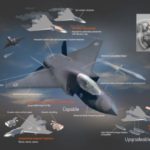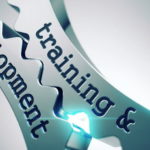Airlines are increasingly trying to connect with customers by helping them improve their “wellness” as they travel the globe. Alan Peaford suggests coming fourth may be better than thinking of number one.
In the 1960s and 70s, aviation was everything. Childhood ambitions were to experience flight and share the excitement of being airborne and becoming part of the ‘jet set’.
Concorde, the 747 Jumbo jet and the 737 were part of this new technology world that envisaged ‘ordinary people’ reaching parts of the Earth that were only previously seen on the pages of an atlas.
The ‘extraordinary people’ – the rich and the famous – would not lose their exclusivity as the new aircraft offered the potential for champagne and caviar at the speed of sound as well as piano bars in the upstairs deck.
People in the developed world grabbed the opportunity. More and more people flew. Pioneers like Sir Freddie Laker took on the aviation establishment and the price of air tickets began to drop.
I remember my first life-changing commercial flight as a 12-year-old on a DC-3 flight from Manston (a former First World War British airbase on the Kent coast) to Oostend in Belgium. The 60nm trip would have cost my father more than a week’s wages for the family of four.
We felt special in our padded economy seats and I don’t remember being cramped or bored (no in-flight entertainment then).
Passenger experience
Over the years, as more as deregulation opened the way for no-frills low-cost carriers, the whole passenger experience changed. It became all about getting more people on the aircraft at a lower cost.
By deconstructing the whole experience, bringing the base price down to rock bottom (yes, I did once fly to Bergano from Luton for 10 cents), expectations diminished. It became acceptable to sit on a hard seat, with the adjoining passenger dominating the armrest as we clutched carry-on bags on our laps because the cost of the ticket was a fraction of an hour’s pay, let alone a week’s.
Meanwhile, the legacy and long-haul carriers, with their sole focus on the premium passengers, carried on with an economy offering that – apart from catering – offered little more than their low-cost cousins, especially once they began charging extras for baggage and seat choice.
Seats
The challenge was how to get more seats in. Reducing the width of seats and reducing the pitch (pardon me, but I thought as a general population we were getting larger than our parents and grandparents).
But maybe, just maybe, things are changing.
April’s Passenger Experience Week in Hamburg, with co-located events for Aircraft Interiors (AIX), World Travel Catering & Onboard Services Expo (WTCO) and Passenger Technology Solutions (PTS), brought the global industry together and there was one word that seemed to have knocked ‘connectivity’ off the top spot: ‘wellness’.
I have been covering AIX since the show began but this was the first time that the industry appeared to be genuinely putting the whole passenger experience – rather than the premium passenger experience – to the top of the agenda.
Designers seemed to be thinking about how to make the whole “experience” better for economy passengers. We saw innovations such as seats that would slide out from the aisle to give more space to get seated before the aisle passenger arrived and seats where the middle seat is slightly recessed to do away with armrest arguments and shoulder banging.
There were products to bring aromatherapy benefits through the aircraft’s system to help us relax (and the manufacturer claims the product can help with fear of flying too).
There were concepts of seats giving greater recline or greater legroom without impeding the “wellness” of the people behind or in front.
Does it add up?
It was not all bad news for the airline accountants as there were still developments such as semi-standing seats (more a sort of perch) that would allow the aircraft to work towards a new maximum passengers limit for short short-haul flights.
Connectivity – the focus in the past few years – is becoming reality. Airbus said its connected cabin is now going “live” as its galley carts, the loo and the seats can all interconnect and begin generating data that will help the airline and its suppliers analyse changing needs of passengers. It will also help cabin staff deliver your refreshments on demand without needing trolleys to block the aisles for half the flight.
The improved connectivity also means we get faster Wi-Fi and that the aircraft can bring us live TV – bringing our heads, at least, into a new place
A fourth place?
And this is the cue to bring in Panasonic’s chief technology officer, David Bartlett, who has a theory that we need to be thinking of a ‘fourth place’. Bartlett says the “wellness” concept should make the passenger feel good about flying again and take away the discomfort and the stress. He reckons this fourth place will do that.
In a From the Top interview, he explained that the first place is home and the people we live with. The second is work and the people we work with. The third — which was famously adopted by Starbucks marketers — is a neutral zone where we can interact and collaborate with our communities: e.g. coffee shops, hair salons, churches, bars, recreation centres, and even co-working spaces.
“At Panasonic, we like to think of the act of travelling as the fourth place. It’s not a fixed location; it’s not home, work or a community meeting space. Rather, the “place” is a state of mind and being that is linked to the experience of travelling,” he said.
I must admit I first thought that this was just some New Age mumbo jumbo, but I am becoming convinced he may be right.
Personalisation
Connectivity meaning we are in touch with the office while travelling may be stressful – but equally being in touch with family if there is a crisis reduces anxiety.
Increased personalisation means the things we want most on our journey can be supplied and with improved security systems and knowledge of ‘normal’ passenger movements, along with biometrics, the whole process should become simpler. With 3D films and games and more personalised service – and please God, a seat that is really fit for purpose – there’s hope that the economy cabin need no longer be the gateway to Hell.
As Dave Bartlett said: “To feel like a home away from home, our travel experiences need to be entirely centred around us and what we find comfortable and comforting. Mobile technology and our growing adoption of it means the fourth place is wherever we are.
“Better yet, our mobile, connected world can adapt as our preferences shift and evolve. In an era where more people are travelling than ever before, the possibilities are limitless – and that’s the true beauty, and promise, of travel as the fourth place.”
The technology and products are here, now. The challenge to airlines and airports is to get synchronised so that the passenger experience can be more deeply personalised and we can all enjoy going fourth.

